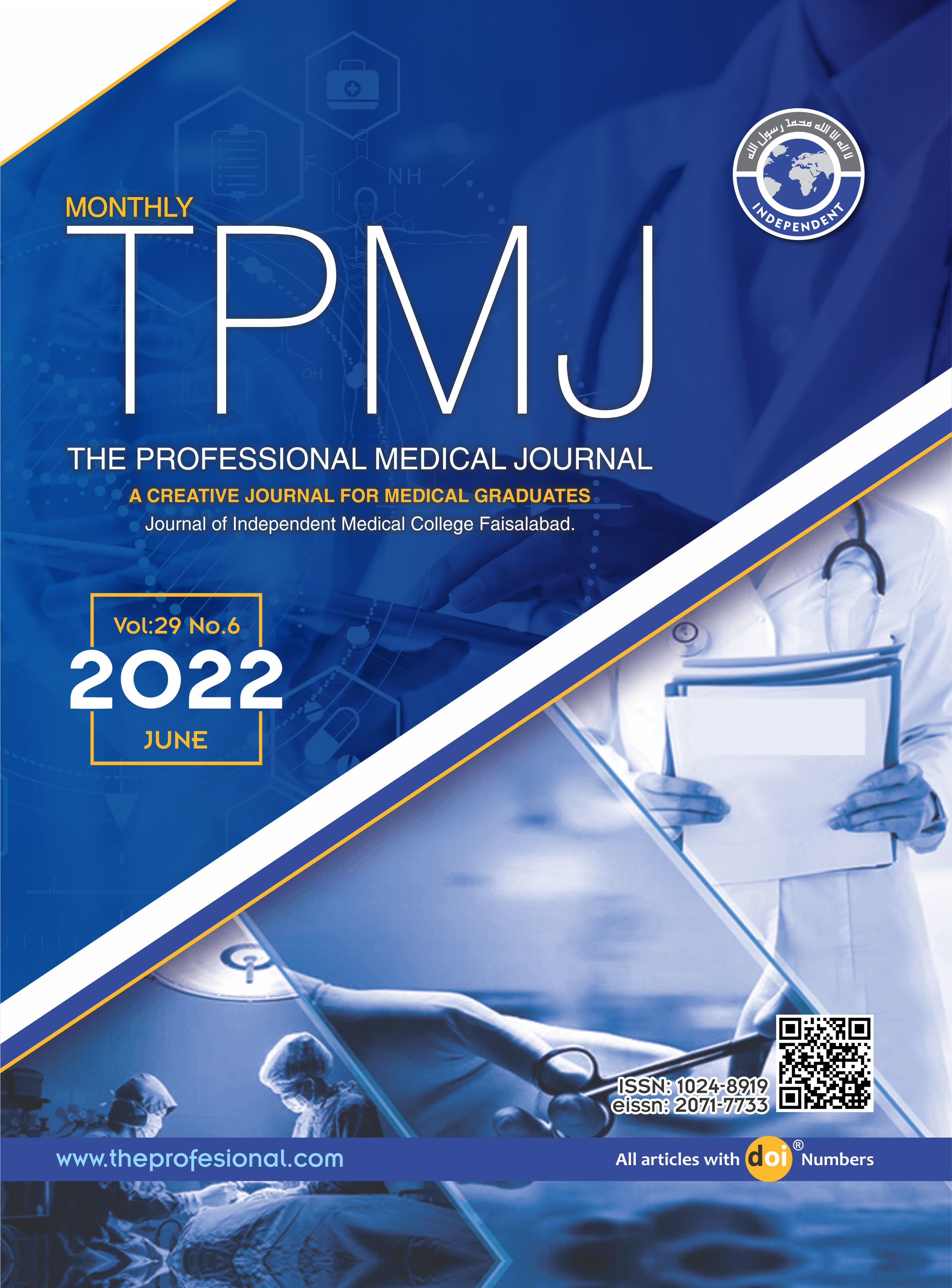Prospects of mesenteric lymphadenopathy in children with chronic abdominal pain (CAP).
DOI:
https://doi.org/10.29309/TPMJ/2022.29.06.6958Keywords:
Chronic Abdominal Pain, Lymph Nodes, Mesenteric LymphadenopathyAbstract
Objective: To evaluate the incidence rate and severity of mesenteric lymphadenopathy in children presenting with CAP in comparison with healthy counterparts. Study Design: Prospective Cross-sectional study. Setting: Department of Pediatric, Nishtar Medical University & Hospital Multan. Period: June 2020 to June 2021. Material & Methods: The prospective cross-sectional study included children aged between 5 to 15 years who were divided into two groups: the study group included children who presented with CAP and the control group included the ones who visited the hospital to undergo abdominal sonography for other reasons. All the study population underwent analysis through abdominal ultrasonography. The existence of enlarged nodules, their size, location, and other related findings was assessed. Baseline characteristics were analyzed in both groups through descriptive statistics whereas Pearson's Chi-square test was performed for comparison of categorical variables. Results: After passing through the study criteria, a total of 80 cases were compared with 110 controls. No significant difference was between the two genders in terms of the occurrence of mesenteric lymphadenopathy. 62 (77.5%) cases were found positive for mesenteric lymph nodes (MLN) by ultrasonography as compared to 19 (17.2%) positive controls. Among them, 42 CAP (52.5%) cases had significant MLN (>10mm long axis or ≥5 mm short axis) while 8 (7.2%) controls were found to have significant MLN (p<0.001). The mesenteric lymph nodes were most commonly located in the right iliac fossa (82%) and peri-umbilical region (75.1%). Conclusion: Mesenteric lymphadenopathy is a significant finding in children with chronic abdominal pain.
Downloads
Published
Issue
Section
License
Copyright (c) 2022 The Professional Medical Journal

This work is licensed under a Creative Commons Attribution-NonCommercial 4.0 International License.


